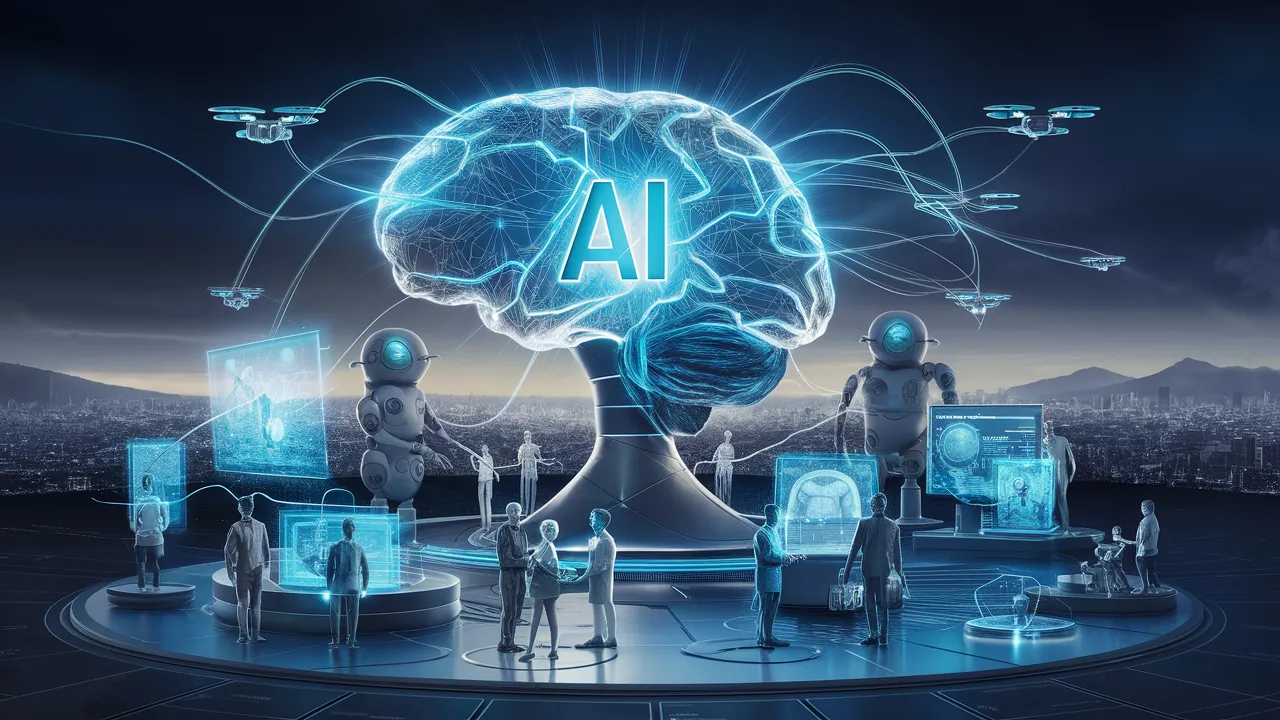June 1, 2025 – In a stark warning that highlights the accelerating impact of artificial intelligence on employment, Dario Amodei, CEO of leading AI research firm Anthropic, has predicted that AI systems could eliminate up to 50% of entry-level white-collar jobs within the next five years. The statement comes as part of a broader discussion on the societal and economic ramifications of rapidly advancing AI technologies.
Amodei’s comments were delivered during a panel discussion on AI and labor markets hosted by the Global Technology Summit. He noted that tasks once considered the bedrock of white-collar professions—such as document summarization, customer service, report generation, data entry, and even basic coding—are increasingly being automated by large language models and other AI systems.
“We are not just looking at AI writing essays or responding to emails,” Amodei said. “We’re seeing systems that can parse legal documents, analyze spreadsheets, write functioning code, and manage workflows with little to no human input. The efficiencies are real, but so are the disruptions.”
Automation Hits the Office First
The white-collar workforce, once thought to be insulated from automation compared to manual labor sectors, is now facing the same existential questions posed by the rise of machines during the Industrial Revolution. With generative AI tools becoming widely accessible, companies are beginning to reassess the value and volume of human labor required in knowledge-based roles.
Tools powered by models like Anthropic’s Claude 3, OpenAI’s GPT-4.5, and Google’s Gemini are increasingly being deployed in fields such as finance, legal services, marketing, and HR. These platforms can analyze market trends, draft contracts, or generate strategic reports at speeds that far outpace human employees—and at a fraction of the cost.
Entry-Level Roles Most at Risk
While the long-term outlook for AI’s impact on mid- and senior-level roles remains uncertain, Amodei emphasized that the short-term disruption will be most felt among early-career professionals. Entry-level jobs often involve repetitive or procedural tasks—the very functions that AI excels at.
“We’re seeing the biggest displacement at the bottom of the ladder,” he said. “Interns, assistants, junior analysts, support staff—these are the positions that could be reduced or eliminated as AI systems continue to improve.”
A recent study by the McKinsey Global Institute supports this concern. The report found that up to 45% of tasks in administrative and data-heavy jobs could be automated by 2027, with early signs already visible in sectors like customer service, bookkeeping, and basic programming.
Upskilling and Strategic Adaptation
In response to these developments, experts and workforce development organizations are advocating for aggressive upskilling and reskilling initiatives. The focus is shifting toward roles that require emotional intelligence, creativity, critical thinking, and deep domain expertise—areas where AI has yet to fully match human capability.
Educational institutions are beginning to adapt their curricula to reflect the changing landscape. Universities and technical colleges are emphasizing digital literacy, AI fluency, and human-AI collaboration as core competencies for the future workforce.
“Rather than resisting the rise of AI, we need to embrace it intelligently,” said Lila Morgan, Director of Workforce Strategy at FutureBridge Institute. “The next generation of workers must learn to lead, supervise, and augment AI systems—not compete with them.”
Corporate Response: Efficiency vs. Responsibility

Major corporations are responding in varying ways. Some are integrating AI as a complement to human workers, aiming to boost productivity while retaining core staff. Others, however, see AI as an opportunity to trim workforce costs dramatically.
Amazon, for example, has begun piloting AI systems that replace some administrative HR functions. Meanwhile, accounting firms are automating tax preparation and auditing processes. According to a report by CNBC, several Fortune 500 companies are actively exploring the use of AI in departments once considered too complex for automation.
While some executives tout these changes as progress, critics argue that the rush toward automation often overlooks the human cost. Layoffs and hiring freezes in white-collar sectors are becoming more frequent, particularly in tech-adjacent industries.
Governments and Labor Advocates Weigh In
Policy responses are slowly emerging. Lawmakers in the European Union and the United States are reviewing legislation aimed at regulating AI’s role in the labor market. Proposals include requiring companies to notify employees about AI displacement, mandating retraining support, and exploring the feasibility of universal basic income.
Labor unions are also stepping into the debate, urging regulators to consider protections for employees whose jobs are threatened by AI. Some groups are calling for ethical review boards to assess corporate AI deployments before implementation.
“There must be a balance,” said Jordan Reyes, spokesperson for the United Workers Alliance. “You can’t champion innovation while discarding the very people who make your organization thrive.”
The Long-Term Outlook: Transformation or Turmoil?
While Amodei’s comments focused on the near-term job loss, he also acknowledged that the long-term impact of AI on work could be transformative in a positive way—if managed responsibly. He envisions a future where human labor shifts toward higher-value tasks, aided by AI tools that reduce tedium and amplify productivity.
“There’s potential for a new kind of workplace,” he said. “One where humans focus on creativity, leadership, and empathy—things AI doesn’t do well—while machines handle the repetitive tasks that slow us down.”
But achieving that future requires intention, investment, and a willingness to reimagine how work is structured. Without those efforts, the next five years could bring unprecedented upheaval in white-collar employment—a shift more disruptive than any previous wave of technological change.
Final Thoughts
The accelerating integration of AI into the global workforce presents both a profound opportunity and a critical challenge. As AI systems grow more capable, businesses, governments, and educational institutions must collaborate to mitigate the fallout while preparing workers for the jobs of tomorrow.
Anthropic’s warning is not just a forecast—it is a call to action. Whether this transition becomes a renaissance of productivity or a crisis of displacement depends on decisions being made today.
For continuing coverage of AI News and the evolving relationship between artificial intelligence and employment, follow the latest stories on TechThrilled.
